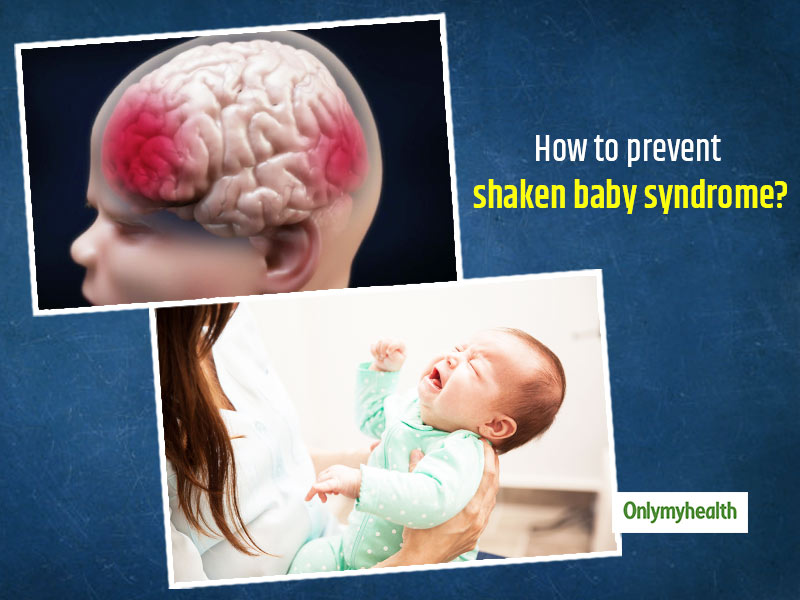
What is Shaken Baby Syndrome? The shaken baby syndrome is a severe brain injury caused by forcefully and violently shaking a baby. Other names include abusive head trauma, shaken impact syndrome, and whiplash shake syndrome. Shaken baby syndrome (SBS), also known as Abusive head trauma or Battered child syndrome, is a consequence to infant or child, following abnormal vigorous shaking of the child resulting in brain and intraocular injury. It can result in as little as five seconds of shaking. Shaken baby syndrome mostly develops in infants up to one year old. Kids in the age group of two to four months are at the highest risk of developing Shaken Baby Syndrome. Babies up to the age of two years have the least risk of developing this syndrome. However, if the child is distracted or excessively violent, there may be a risk of developing the problem between four and six. Common signs of the child of Shaken Baby Syndrome are mentioned below:
Table of Content:-
Shaken Baby Syndrome: Here are the signs and symptoms related to this syndrome
What signs indicate a complication of Shaken Baby Syndrome? Explains Dr Shiv N Gupta
What is the expected duration for shaken baby syndrome? Shares Dr Vinit Samdani
Shaken baby syndrome: When Should One Seek Medical Advice? Explains Dr Shiv N Gupta
Prevention Tips: How can one prevent shaken baby syndrome? Shares Dr Vinit Samdani
5 "s" prevention strategies for an excessively crying child-
What environmental factors contribute to causing shaken baby syndrome?
Shaken Baby Syndrome: Here are the signs and symptoms related to this syndrome

Dr Vinit Samdani, Pediatrician, Bhatia Hospital Mumbai shares the symptoms of the shaken baby syndrome include:
- Extreme irritability or fussiness
- Difficulty staying awake
- Coma and Paralysis
- Breathing problems
- Bluish or pale skin
- Poor eating
- Vomiting
- Seizures
Also Read: Know The Importance Of Routine Vaccination By Pulmonologist Avi Kumar
Dr Shiv N Gupta, SR in Pediatrics at ESIC and PGIMSR, New Delhi, share the mild to moderate presentation in the form of:
- Inability to nurse or feed
- Inconsolable cry
- Convulsions
- Drowsiness
- Lethargy
Shaken Baby Syndrome: What are the causes of this syndrome?
- Often, the Shaken Baby Syndrome occurs when a person forces and shakes the infant. Many people get angry when the baby starts crying excessively and does not calm down and starts bouncing in anger to calm the baby.
- As you know, the muscles and neck of a small baby are very delicate. For which the head of the baby always has to support with a hand. When an infant is uncontrollably shaken or doused, it occurs uncontrollably in the infant.
- Forcibly shaking affects the baby's brain. Such as bleeding, swelling in the brain, bruising etc
Also read: 10 Best home remedies for Cold and Cough
What is the diagnosis of Shaken Baby Syndrome?
Diagnosis of Shaken Baby Syndrome may not occur in most cases. This is because parents or caregivers are either unaware of the trauma or lie about their child's violent behaviour. To diagnose Shaken Baby Syndrome, your doctor must:

- Diagnostic test: Your physician may ask for an MRI or computed tomography (CT) of the child's head if any of the signs are symptomatic (magnetic resonance imaging).
- Physical examination: Getting an assessment done by an experienced ophthalmologist is very important for the correct diagnosis of the disease. This is because bleeding from the eyes is a strange sign.
Keep a close watch on any changing behaviour in your baby. X-rays are performed to detect fractures in the ribs.
Also Read: Paediatrician's Guide To Introducing Solid Food To Babies
What signs indicate a complication of Shaken Baby Syndrome? Explains Dr Shiv N Gupta
- Multiple fractures involving limbs, shoulders of the child
- Unconsciousness or difficulty in awakening the child
- Poor eye fixation or impairment of vision of a child
- Multiple bruises of different ages over child body
- The hearing problem in a child
For severe symptoms, there is a need for attention to child vigilance to suspect the presence of child abuse.
- Respiratory support like assisted ventilation
- Medication for seizures to control them
- Parental education and counselling
- Orthopaedic intervention, if any
- Continuous ICU monitoring
- Ophthalmic examination
- Physical examination
- Hearing assessment
- Skeletal survey
- Neuroimaging
Also Read: Dr Atish Laddad Explains Easy Ways To Treat Tummy Torment In Toddlers
What is the expected duration for shaken baby syndrome? Shares Dr Vinit Samdani
Shaken baby syndrome (SBS) is more common in infants and toddlers because they are tough to console and easy to shake when frustrated. Parents or caregivers who are frustrated or agitated find it easy to shake and reassure the child by shaking, which complicates. Duration of symptoms and signs depends on the severity of symptoms at presentation and time lag for seeking medical attention. Single or young parenthood, unrealistic expectations of babies, domestic violence, stress, substance or alcohol abuse. Unstable family situations like parents relations, financial emotions, a history of mistreatment as a child and depression.
Shaken baby syndrome: When Should One Seek Medical Advice? Explains Dr Shiv N Gupta

Medical advice is often delayed in SBS because of caretakers' frustration, which further adds to its severe presentation. Any child who, after the episode of vigorous shaking, starts having-
- If you have difficulty handling the pressure of parenthood or your emotions or financial issues, ask for help from a mental health provider or another counsellor. Whether a hired caregiver, sibling or grandparent, make sure they know the shaken baby syndrome's dangers.
- Poor eye fixation or vision impairment (due to retinal haemorrhage)
- Restricted limb movement (suspected fractures)
- When your crucial child cannot be calmed, you may be tempted to try anything to get the tears to stop, but it's essential always to gently treat your child. Nothing justifies or can be achieved by shaking a baby.
- Difficult to wake up the child
Also Read: Say No To Packaged Baby Foods, Feed Your Baby This Homemade Multigrain Baby Food
- Abnormal body movements
- Excessive drowsiness
- Inconsolable cry
- Inability to feed
- Parent training sessions can help parents better recognise the risks of violent shaking and provide suggestions to manage stress and calm a crying baby.

Prevention Tips: How can one prevent shaken baby syndrome? Shares Dr Vinit Samdani
If there is any injury to your baby's spinal cord, then make sure that the person shakes it comfortably so that the baby's neck and head will not be in the mood. Survivors of the shaken baby syndrome may require lifelong medical care for conditions like:
- Developmental delays, learning problems or behaviour issues
- Partial or total blindness
- Intellectual disability
- Seizure disorders
- Cerebral palsy
5 "s" prevention strategies for an excessively crying child-
- SHUSHING- creating white noise that mimics womb noise like dryer sounds, vacuum cleaner etc
- SWADDLING- cover the baby with bedsheets or blanket so that baby feels more secured
- SUCKLING- let the baby breastfeed or give the pacifier
- SIDE stomach positioning while holding the baby
- SWINGING- gentle swinging or moving the child.
What environmental factors contribute to causing shaken baby syndrome?
Dr Shiv N Gupta shares some circumstances to look out for:
- Underlying sickness like a nasal blockade, infantile colic of the child leading to exaggerated cry
- Incomplete knowledge about the child's normal development and behaviour
- Excessive frustration among parents or caregivers
- The new entry of an adult at home
- Father only as a caretaker
- Step parenthood
Also read: 5 Superfoods for Toddlers You Must Know
Takeaway Tips By Dr Vinit Samdani
In mild cases of the shaken baby syndrome, a baby may appear healthy after being shaken, but she or he may develop behavioural or health problems over time.

- Baby sitter, caregiver and even new parents should be informed about the results of the shaking baby
- If you cannot control your anger, attend a parenting class or seek a counsellor's help
- To learn an average child's development and behaviour for better understanding
- Never distract your child during play or anger
- Do not slap or hit the child overhead or neck
- To take a break whenever feel overwhelmed
- To find ways to relieve stress for caretakers
- Do not shake the child
On average, one in four children dies of Shaken Baby Syndrome. In some cases, there are no obvious physical symptoms of Shaken Baby Syndrome. It isn't easy to be diagnosed with this syndrome.
Read more articles on Children Health
Also watch this video
How we keep this article up to date:
We work with experts and keep a close eye on the latest in health and wellness. Whenever there is a new research or helpful information, we update our articles with accurate and useful advice.
Current Version
